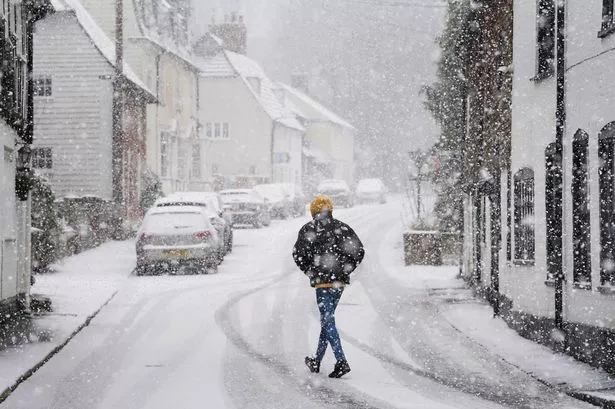Introduction
As winter approaches, many households in the UK brace for the financial burden that comes with colder temperatures and rising energy costs. In a timely move, the Department for Work and Pensions (DWP) triggers cold weather payments for another 200,000 people, providing crucial support for vulnerable families. This initiative aims to help those who struggle to afford heating during the coldest weeks of the year. In this article, we’ll explore the details of these payments, eligibility criteria, and the broader implications for those affected.
What Are Cold Weather Payments?
Cold Weather Payments are designed to offer financial assistance to individuals and families facing high heating costs during periods of extreme cold. The payments are automatically issued when the average temperature in a designated area falls below a specific threshold for seven consecutive days. Each eligible household receives £25 for each week of cold weather, which can significantly help manage heating bills during winter.
Who Is Eligible for Cold Weather Payments?
To benefit from these payments, individuals must meet certain eligibility criteria:
- Income Support: Households receiving Income Support may qualify for Cold Weather Payments.
- Universal Credit: Those on Universal Credit may also be eligible, particularly if they have children under 5 or face additional challenges.
- Pension Credit: Older adults receiving Pension Credit can benefit from these payments as well.
- Health Conditions: Specific health conditions that increase heating needs are also considered in determining eligibility.
With the recent announcement that the DWP triggers cold weather payments for another 200,000 people, many households previously unaware of their eligibility may now receive this essential support.
The DWP’s Recent Announcement
The DWP’s activation of Cold Weather Payments for an additional 200,000 people underscores the urgent need for financial assistance as energy prices continue to rise and forecasts indicate a potentially harsh winter ahead. By expanding eligibility, the DWP aims to alleviate the financial strain on vulnerable families and ensure they can afford to heat their homes during the coldest months.
Importance of the Payments
The £25 payments may seem modest, but they can make a significant difference for families struggling with high heating costs. This initiative is part of a broader strategy to combat fuel poverty and protect low-income households from the severe impacts of winter weather.
How to Claim Cold Weather Payments
One of the key benefits of Cold Weather Payments is that they are issued automatically to those who qualify. However, it’s vital for recipients to ensure that their information with the DWP is accurate and up to date. Here are some steps to follow:
Steps to Ensure You Receive Your Payment:
- Check Eligibility: Review the eligibility criteria to confirm your qualification for Cold Weather Payments.
- Update Your Information: Ensure that your details, including address and any changes in circumstances, are current with the DWP.
- Monitor Local Weather: Stay informed about local weather forecasts, as payments are triggered based on specific temperature conditions.
Impact of Cold Weather Payments
The activation of Cold Weather Payments is a crucial lifeline for many households facing winter hardships. The support can alleviate some financial burdens, allowing families to redirect funds toward other essential needs, such as groceries or healthcare.
Real-Life Examples
Example 1: The Smith Family
Living in a small flat in the North East, the Smith family faced the prospect of a challenging winter. With two children and one parent unable to work due to health issues, their budget was extremely tight. The announcement that the DWP triggers cold weather payments for another 200,000 people brought them hope. The £25 weekly support helped them keep their home warm without sacrificing meals or other necessities.
Example 2: Elderly Residents
For elderly individuals living on fixed incomes, winter can be especially daunting. Mrs. Thompson, a pensioner, expressed her relief when she learned she qualified for Cold Weather Payments. The financial assistance allowed her to maintain a comfortable temperature in her home without the constant worry of rising energy bills.
Future of Cold Weather Payments
The DWP’s decision to trigger cold weather payments for another 200,000 people reflects a proactive stance on supporting vulnerable communities. However, as energy prices remain volatile, discussions around extending support or increasing payment amounts may become necessary.
Potential Policy Changes
As the government evaluates the ongoing need for these payments, there could be calls to expand eligibility further or enhance the support provided during cold weather. Greater outreach efforts could also ensure that more people are aware of the assistance available to them.
Also Read: Exploring the Shape: YL6AXE4-OZQ = Pentagon
Conclusion
The DWP triggers cold weather payments for another 200,000 people as part of an essential effort to support vulnerable households during the winter months. As energy costs rise and temperatures drop, these payments serve as a critical resource for many families struggling to keep their homes warm.
Understanding the eligibility criteria and ensuring that personal information is up to date with the DWP can help individuals navigate this support system effectively. The commitment from the DWP to extend Cold Weather Payments underscores the importance of community support and the need to care for those facing challenges during the colder months.
In conclusion, the expansion of Cold Weather Payments highlights the collective responsibility to ensure that everyone has access to warmth and comfort in their homes, especially during the harshest season of the year.


